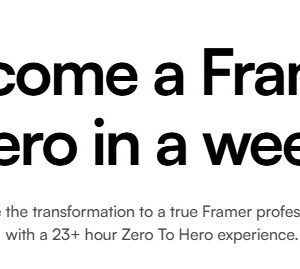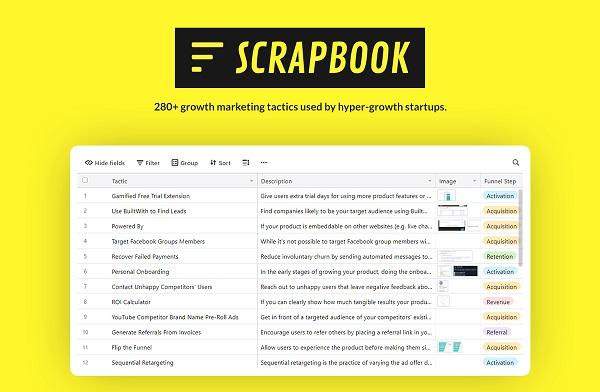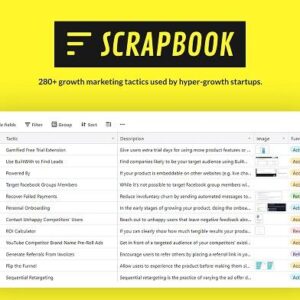Proof of payment:

Unlock Your Story – The Ultimate All About Me Scrapbook Guide. The appeal of preserving memories and creating a tangible narrative of one’s life has never waned, making the all about me scrapbook a timeless and cherished project. It’s more than just gluing photos onto paper; it’s a journey of self-discovery and a celebration of personal milestones. This comprehensive guide will delve into creating a meaningful and visually stunning all about me scrapbook, packed with inspiration and practical tips.
All about me scrapbook
The essence of an all about me scrapbook lies in its deeply personal nature. It’s a curated autobiography, a visual and textual representation of your life’s journey, passions, and defining moments. Think of it as a time capsule that encapsulates your essence for future generations or simply as a therapeutic exercise in self-reflection. Unlike generic scrapbooks filled with travel photos or holiday memories, an all about me scrapbook focuses solely on you – your dreams, your quirks, your accomplishments, and even your struggles. It’s a project that allows you to be the author, the artist, and the protagonist of your own story. It is a labor of love, chronicling your evolution from childhood dreams to present-day realities, serving as both a keepsake and a vehicle for self-exploration, offering a unique and intimate way to connect with your past, understand your present, and envision your future. Choosing to create an “all about me” scrapbook provides a fantastic way to visually document your personal journey, interests, and memories.
Defining Your Narrative: Themes and Focus
Before you even touch a piece of paper or adhesive, the most crucial step is defining the narrative you want to convey. What aspects of your life do you want to highlight? Consider brainstorming themes that resonate with you. These could range from specific periods in your life (childhood, adolescence, young adulthood) to defining aspects of your personality (your passions, your values, your hobbies). Perhaps you want to focus on your career journey, tracing your professional growth and key milestones. Or maybe you’re drawn to exploring your relationships – the bonds with family, friends, and significant others that have shaped you into the person you are today. Alternatively, you could center your scrapbook around a particular theme like travel experiences, personal growth challenges, or simply moments of joy and inspiration.
The beauty of an all about me scrapbook is that there are no rules. It’s entirely up to you to decide what makes your story unique and worth preserving. Once you have a clear understanding of your central themes, you can begin gathering materials and structuring your scrapbook with a focused perspective, making the selection and presentation process far more efficient and purposeful. A well-defined theme acts as a filter, ensuring that every element you include contributes to the overall narrative and reinforces the message you want to convey.
Material Gathering: Beyond Photos
While photos undoubtedly form the cornerstone of any scrapbook, an all about me scrapbook thrives on a diverse range of materials that add depth, texture, and personality to each page. Think beyond the typical snapshots and delve into your personal archives for artifacts that hold memories and stories. Old ticket stubs from concerts you attended, handwritten letters from loved ones, postcards received during your travels, childhood drawings, report cards (for a nostalgic touch!), business cards from old jobs – all these seemingly insignificant items can transform your scrapbook into a rich tapestry of your life. Don’t underestimate the power of ephemera like brochures, maps, and even packaging materials from meaningful purchases. These tangible mementos can evoke powerful emotions and help to recreate the atmosphere of specific moments in time.
Consider incorporating different textures and mediums to add visual interest. Fabric scraps from a favorite outfit, pressed flowers from a special occasion, ribbons, buttons, and even small trinkets can be creatively integrated into your layouts. Experiment with washi tape, patterned paper, stickers, and various embellishments to personalize each page and reflect your unique style. Remember, the goal is to create a scrapbook that is not just visually appealing but also tells a story through its materials. Each item should have a personal connection to you and contribute to the overall narrative you are trying to create.
Structuring the Narrative: Layout and Design Principles
Once you have your theme and gathered your materials, it’s time to start thinking about the structure and design of your all about me scrapbook. While there’s no right or wrong way to arrange your pages, some basic design principles can help you create a visually appealing and cohesive narrative. Consider using a chronological approach, starting with your earliest memories and working your way up to the present day. This can provide a clear and linear storyline that traces your personal evolution. Alternatively, you could organize your scrapbook thematically, grouping pages based on specific aspects of your life or personality. For example, you could have a section dedicated to your hobbies, another to your travels, and another to your relationships.
When it comes to layout, the key is to create a balance between visual interest and readability. Avoid cluttering each page with too many elements. Instead, focus on creating focal points that draw the eye and guide the viewer through the story. Use photos and journaling to create a clear hierarchy of information. Photos should be prominently displayed, while journaling can provide context and add personal insights. Experiment with different photo sizes and arrangements to create visual interest. Use mats and borders to frame your photos and add depth. Remember to leave some white space on each page to prevent it from feeling overwhelming. And above all, don’t be afraid to experiment and let your creativity flow. The most important thing is to create a scrapbook that is authentic to you and reflects your unique style.
Scrapbook page ideas
Unlocking your creative potential is integral to crafting standout pages; thus, the abundance of scrapbook page ideas available serves as a valuable catalyst. A well-executed scrapbook page is a work of art, a harmonious blend of photos, text, and embellishments that tells a story in a visually captivating way. The wealth of ideas available acts as a treasure trove, inspiring you to go beyond the ordinary and create pages that are truly unique and memorable. These ideas can range from thematic layouts that focus on specific events or memories to artistic techniques that add depth and texture to your pages. Embracing a variety of scrapbook page ideas can help you to break free from creative ruts and discover new ways to express yourself and preserve your precious memories. The ultimate goal is to create a scrapbook that is not only a beautiful keepsake but also a personal expression of your individuality and creativity.
Timeline of Milestones: Visualizing Your Journey
One of the most impactful scrapbook page ideas is to create a timeline of key milestones in your life. This can be a particularly effective way to showcase your journey and highlight the moments that have shaped you into the person you are today. Start by selecting the most significant events in your life, such as graduations, first jobs, travels, personal achievements, and relationship milestones. Then, gather photos and memorabilia that represent these moments. Arrange them chronologically on a series of pages, creating a visual timeline that traces your path.
Use journaling extensively to provide context and add personal reflections. Describe the events in detail, share your feelings and emotions at the time, and reflect on how these experiences have impacted your life. Consider incorporating quotes, song lyrics, or poems that resonate with you and capture the spirit of each moment. To add visual interest, experiment with different layouts and design elements. Use arrows, lines, and other graphic elements to connect the milestones and create a sense of continuous flow. Incorporate different textures and mediums, such as fabric scraps, buttons, and washi tape, to add depth and dimension to your timeline. The goal is to create a visual narrative that is both informative and engaging, allowing you and others to relive your journey and appreciate the milestones that have defined you.
“Currently” Page: A Snapshot in Time
Another creative and engaging scrapbook page idea is to create a “Currently” page that captures a snapshot of your life in the present moment. This type of page is a fun and easy way to document your current interests, passions, and everyday experiences. Start by listing the things that are currently occupying your mind, such as your favorite books, movies, music, and hobbies. Include photos that represent these interests, such as a picture of your current read, a screenshot of your favorite movie scene, or a photo of you engaging in your favorite hobby.
Supplement the photos with journaling, describing your current feelings, thoughts, and goals. Share what you’re grateful for, what you’re looking forward to, and what challenges you’re currently facing. Consider incorporating fun facts about yourself, such as your favorite food, your favorite color, or your favorite quote. To add visual interest, experiment with different design elements, such as patterned paper, stickers, and washi tape. Use bright colors and playful fonts to create a cheerful and inviting page. The “Currently” page is a unique way to capture a moment in time and create a tangible reminder of what was important to you at that particular stage of your life. It’s also a fun way to track your evolution and compare your current interests and experiences with those of your past.
Letter to Your Future Self: A Message Through Time
A particularly poignant and reflective scrapbook page idea is to write a letter to your future self. This unique page serves as a time capsule of your current thoughts, hopes, and dreams, offering a glimpse into your present self for your future self to discover. Start by reflecting on your current life circumstances, your goals, and your aspirations. What are you hoping to achieve in the future? What kind of person do you aspire to be? What advice would you give to your future self?
Write a heartfelt letter addressing these questions, sharing your innermost thoughts and feelings. Be honest, be vulnerable, and be authentic. Consider including specific details about your current life, such as your relationships, your career, your hobbies, and your challenges. This will help your future self to connect with your past self and appreciate how far you’ve come. Incorporate photos that represent your current life and aspirations. Include pictures of your loved ones, your work environment, your hobbies, and the places you dream of visiting.
To add visual interest, seal the letter in an envelope and decorate it with stickers, stamps, and washi tape. This will create a sense of mystery and anticipation for your future self. Write a date on the envelope indicating when you want it to be opened. This will add to the excitement and make the experience even more meaningful. The letter to your future self is a powerful way to connect with your past, reflect on your present, and envision your future. It’s a gift that you give to yourself, a tangible reminder of your hopes and dreams, and a testament to your personal growth and evolution.
Scrapbook page examples
Examining the diverse array of scrapbook page examples broadens your perspective on effective design and storytelling techniques, and helps you get clear ideas. A look through different scrapbook page examples can inspire you to think outside the box and experiment with new styles and layouts. By studying different techniques and approaches, you can develop your own unique style and create pages that are truly personalized and meaningful. These examples can provide valuable insights into how to effectively combine photos, text, and embellishments to create a cohesive and visually appealing narrative. The key is to carefully analyze the elements that make each page successful and adapt them to your own personal style and storytelling needs. The exploration of scrapbook page examples offers endless possibilities for creativity and self-expression.
Themed Layout: Travel Adventures
Travel-themed scrapbooks are popular choices, and there are endless possibilities when it comes to design. Consider a layout dedicated to a specific trip or destination. Use a large panoramic photo as the background, then layer smaller photos on top, highlighting key moments and landmarks. Incorporate travel memorabilia such as ticket stubs, maps, brochures, and postcards to add authenticity and texture. Use journaling to describe your experiences, share your favorite memories, and reflect on the impact of the trip on your life.
To add visual interest, use a color palette that reflects the destination. For example, if you’re scrapbooking a trip to Italy, use warm, earthy tones like terracotta, olive green, and ochre. If you’re scrapbooking a trip to the beach, use cool, coastal colors like blues, turquoise, and sand. Use travel-themed embellishments such as airplane charms, compass stickers, and world map paper to reinforce the theme. Experiment with different fonts and handwriting styles to create a unique and personalized look. The goal is to create a scrapbook page that transports you back to your travel adventures and allows you to relive the memories and emotions of the trip.
Photo Collage: A Visual Feast
A photo collage is a great way to showcase a large number of photos on a single scrapbook page. This technique is particularly effective for documenting events, celebrations, or periods of time where you have many photos to share. Start by selecting your favorite photos and arranging them in a pleasing composition. You can create a symmetrical collage with evenly sized photos or a more organic collage with photos of varying sizes and shapes. Experiment with different arrangements until you find a layout that you like.
Use a variety of techniques to add visual interest to your collage. Overlap photos, crop them into different shapes, and use mats and borders to frame them. Add journaling and embellishments to fill in the gaps and add context to the photos. Consider using a consistent color palette or theme to tie the collage together. For example, you could use black and white photos with pops of color or a vintage theme with sepia-toned photos and antique embellishments. A photo collage is a dynamic way to showcase your memories and create a visually stimulating scrapbook page.
Double-Page Spread: Expanding the Story
When a single page isn’t enough to tell your story, consider using a double-page spread. This technique allows you to create a larger and more immersive layout that seamlessly connects two pages. A double-page spread is particularly effective for documenting special events, telling longer stories, or showcasing large photos. Plan your layout carefully, considering how the two pages will work together. Use a unifying element to connect the pages, such as a background paper, a photo that spans both pages, or a consistent design element. Use journaling to tell a cohesive story that flows from one page to the next.
Consider using a dominant photo on one page and supporting photos and journaling on the other page. This can help to create a focal point and guide the viewer’s eye through the layout. Experiment with different design elements to add visual interest and create a sense of balance. Use a variety of textures, colors, and embellishments to enhance the story and create a visually appealing spread. Using a double-page spread is a powerful way to expand your storytelling and create a more immersive and memorable scrapbook experience.
Scrapbooking how to
Mastering scrapbooking how to skills is fundamental to transforming fleeting moments into lasting artistic legacies. Scrapbooking is an art form that combines creativity, storytelling, and memory preservation. To master scrapbooking how to you need to understand the fundamental techniques. This comprehensive guide to scrapbooking how to will provide you with the knowledge and skills you need to create stunning and meaningful scrapbooks. No matter if you are a seasoned crafter or are just starting to dabble in this hobby, you can transform your memories into art. Each scrapbook page can be a beautiful snapshot that you can return to time and again.
Essential Tools and Materials: Setting Up Your Workspace
Before you begin your scrapbooking journey, it’s important to gather the essential tools and materials that will facilitate your creative process. The first and foremost tool is a good quality scrapbook album. Choose an album size that suits your needs, taking into consideration the size of your photos and the amount of journaling you plan to include. A 12×12 inch album is a popular choice as it provides ample space for creativity.
Next, you’ll need a variety of papers to create your page backgrounds and embellishments. Patterned paper, cardstock, and vellum are all great options. Choose papers that complement your photos and reflect the theme of your scrapbook. Adhesives are essential for attaching photos, papers, and embellishments to your pages. Use photo-safe adhesives that won’t damage your photos over time. Double-sided tape, glue dots, and adhesive runners are all great choices.
Cutting tools are also important for creating precise cuts and shapes. A paper trimmer is essential for cutting straight lines, while scissors and craft knives are useful for more intricate cuts. Embellishments are the finishing touches that add personality and flair to your scrapbook pages. Stickers, brads, eyelets, ribbons, and buttons are all great options. Finally, you’ll need journaling pens to add writing to your pages. Use acid-free, archival-quality pens that won’t fade or bleed over time. With the right tools and materials, you’ll be well-equipped to create beautiful and lasting scrapbooks.
Basic Techniques: Cutting, Gluing, and Layering
Once you have your tools and materials, it’s time to learn the basic techniques of scrapbooking. Cutting is an essential skill for creating clean and precise edges on your papers and photos. Use a paper trimmer for straight lines and scissors or a craft knife for more intricate cuts. Practice cutting different shapes and sizes to develop your skills. Gluing is the process of attaching your photos, papers, and embellishments to your scrapbook pages. Use photo-safe adhesives to avoid damaging your photos over time.
Apply adhesive sparingly and evenly to prevent warping or bleeding. Layering involves placing different papers, photos, and embellishments on top of each other to create depth and dimension. Experiment with different layering techniques to add visual interest to your pages. Start with a background paper, then add layers of photos, papers, and embellishments. Use different sizes, shapes, and textures to create a dynamic and engaging layout. Remember to leave some white space on your pages to prevent them from feeling cluttered.
Advanced Techniques: Embellishing and Journaling
Once you’ve mastered the basic techniques, you can explore more advanced techniques to enhance your scrapbooking skills. Embellishing involves adding extra details and decorations to your pages to make them more visually appealing. Use stickers, brads, eyelets, ribbons, and buttons to add personality and flair to your scrapbook. Experiment with different embellishment techniques, such as distressing, inking, and embossing, to add texture and dimension to your pages. Journaling is the process of adding writing to your scrapbook pages to tell the story behind your photos.
Use acid-free, archival-quality pens to avoid fading or bleeding over time. Write about the events, people, and emotions captured in your photos. Add personal anecdotes, memories, and reflections to create a more meaningful and engaging scrapbook. Consider using different journaling styles, such as handwritten notes, typed text, or quotes. Experiment with different fonts and handwriting styles to create a unique and personalized look. With advanced embellishing and journaling techniques, you can transform your scrapbooks into treasured heirlooms that will be cherished for generations to come.
Conclusion
The creation of an “all about me” scrapbook is a deeply personal and rewarding journey. By defining your narrative, gathering meaningful materials, experimenting with creative layouts, and mastering essential scrapbooking techniques, you can create a treasured keepsake that celebrates your unique story. Embrace the wealth of inspiration available, including diverse scrapbook page ideas and scrapbook page examples. Master scrapbooking how to and enjoy documenting your personal story. Your “all about me” scrapbook is more than just photos and paper; it’s a tangible representation of your life, your passions, and your enduring legacy.









